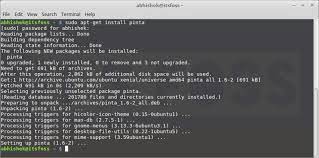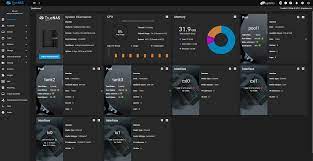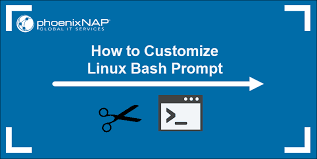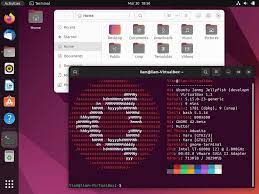Linux NAS: A Powerful Solution for Network Storage
In today’s digital age, the need for reliable and accessible storage solutions has become paramount. Whether you are a small business owner, a home user with a growing media collection, or a tech enthusiast looking to optimize your network storage, Linux NAS (Network Attached Storage) stands out as an excellent choice. With its robust features, flexibility, and open-source nature, Linux NAS offers a powerful solution for all your storage needs.
What is Linux NAS?
At its core, Linux NAS is a dedicated network storage device that utilizes the Linux operating system. It allows you to centralize and manage your data across multiple devices on your network seamlessly. Unlike traditional file servers or cloud-based solutions, Linux NAS provides you with complete control over your data and eliminates the need to rely on external services.
Flexibility and Customization
One of the key advantages of Linux NAS is its flexibility. With a wide range of distributions available such as FreeNAS, OpenMediaVault, or even building your own solution from scratch using Ubuntu Server or CentOS, you have the freedom to tailor your setup according to your specific requirements.
Linux NAS supports various file systems like ext4, ZFS, or Btrfs that offer advanced features such as data deduplication, snapshots, and RAID configurations. This flexibility allows you to choose the right combination of hardware and software that suits your needs while ensuring data integrity and reliability.
Data Protection and Redundancy
Data loss can be devastating. However, Linux NAS provides built-in mechanisms to protect your valuable files. By configuring RAID (Redundant Array of Independent Disks) levels like RAID 1 (mirroring) or RAID 5 (striping with parity), you can ensure redundancy in case of disk failures. This means that even if one or more drives fail within the array, your data remains intact.
Moreover, some distributions offer advanced features like snapshotting. Snapshots allow you to create point-in-time copies of your data, enabling easy recovery in case of accidental deletions or file corruptions.
Remote Access and Collaboration
Linux NAS empowers you to access your files from anywhere in the world. By setting up secure remote access protocols such as SSH (Secure Shell) or VPN (Virtual Private Network), you can securely connect to your NAS device and manage your files remotely. This not only enhances productivity but also enables seamless collaboration among team members, whether they are in the same office or scattered across different locations.
Cost-Effectiveness
Investing in dedicated network storage solutions can often be expensive. However, Linux NAS offers a cost-effective alternative. By repurposing old hardware or using off-the-shelf components, you can build a powerful NAS system at a fraction of the cost of commercial solutions. Additionally, the open-source nature of Linux means that there are no licensing fees involved, making it an attractive choice for budget-conscious users.
Conclusion
Linux NAS provides a versatile and reliable solution for network storage needs. With its flexibility, customization options, data protection mechanisms, remote access capabilities, and cost-effectiveness, it has become a go-to choice for individuals and businesses alike.
Whether you are looking to centralize your data storage, protect valuable files, or enable seamless collaboration, Linux NAS offers the tools and features necessary to meet your requirements. Embrace the power of open-source technology and unlock the full potential of your network storage with Linux NAS.
6 Essential Tips for Securing Your Linux NAS
- Always keep your NAS up to date with the latest security patches and software updates.
- Consider using encryption for sensitive data stored on a NAS device.
- Make sure you have adequate backup of all the data stored on the NAS system in case of hardware failure or malicious attack.
- Choose a secure username and password for your NAS device, and change them regularly.
- Use RAID storage if possible to ensure that data is securely backed up in case of disk failure or other issues with the primary disk drive.
- Monitor your system logs regularly to detect any suspicious activity on your NAS device, such as unauthorised access attempts or malicious software infections
Always keep your NAS up to date with the latest security patches and software updates.
The Importance of Keeping Your Linux NAS Up to Date
When it comes to managing your Linux NAS (Network Attached Storage), one crucial tip stands out above the rest: always keep your NAS up to date with the latest security patches and software updates. This simple yet essential practice ensures that your network storage remains secure, reliable, and optimized for performance.
Security is Paramount
In today’s interconnected world, cyber threats are constantly evolving. Hackers and malicious actors are always on the lookout for vulnerabilities to exploit. By regularly updating your Linux NAS with the latest security patches, you fortify its defences against potential attacks.
Software developers work diligently to identify and fix any security vulnerabilities that may arise in their products. These updates often include crucial security patches that address known vulnerabilities and protect against emerging threats. By promptly applying these updates, you significantly reduce the risk of unauthorized access or data breaches.
Enhanced Stability and Performance
Software updates not only focus on security but also aim to improve stability and performance. Developers continuously refine their software, addressing bugs, enhancing features, and optimizing performance based on user feedback and industry standards.
By keeping your Linux NAS up to date, you ensure that it operates at its best capacity. Updates may include performance enhancements, bug fixes, or new features that can enhance your overall user experience. Additionally, staying current with software updates helps maintain compatibility with other devices or services on your network.
Streamlined Management
Regularly updating your Linux NAS simplifies system management in the long run. By staying up to date with software releases, you avoid accumulating a backlog of updates that can become overwhelming or time-consuming to install all at once.
Frequent updates also allow you to take advantage of new features or improvements as soon as they become available. This ensures that you have access to the latest tools and functionalities offered by the software developers.
How to Keep Your Linux NAS Up to Date
Keeping your Linux NAS up to date is a straightforward process. Most Linux NAS distributions provide built-in tools or mechanisms for updating the system. These tools may include automatic update options or manual update procedures. It is recommended to regularly check for updates and install them in a timely manner.
Additionally, it is advisable to subscribe to mailing lists or follow official channels of your Linux NAS distribution to stay informed about important security updates and releases.
Conclusion
In the ever-evolving landscape of technology, maintaining a secure and efficient Linux NAS is paramount. By consistently updating your NAS with the latest security patches and software updates, you safeguard your data, enhance performance, and streamline system management.
Make it a habit to prioritize the regular maintenance of your Linux NAS by staying up to date with software updates. By doing so, you can enjoy peace of mind knowing that your network storage remains protected, stable, and optimized for optimal performance.
Consider using encryption for sensitive data stored on a NAS device.
Enhancing Security: Encrypting Sensitive Data on Your Linux NAS
When it comes to storing sensitive data on your Linux NAS (Network Attached Storage) device, ensuring the utmost security is crucial. While Linux NAS provides various features to protect your files, taking an extra step by implementing encryption can provide an additional layer of safeguarding. By encrypting your sensitive data, you can mitigate the risk of unauthorized access and keep your confidential information secure.
Why Encryption Matters
Encryption is the process of converting data into a format that is unreadable without a decryption key. It ensures that even if someone gains unauthorized access to your files, they will be unable to decipher the contents without the encryption key. This added security measure significantly reduces the risk of data breaches and protects sensitive information from falling into the wrong hands.
Implementing Encryption on Your Linux NAS
Linux offers several options for encrypting data stored on your NAS device. One popular choice is using LUKS (Linux Unified Key Setup), which allows you to create an encrypted container or partition on your hard drive. LUKS provides robust encryption algorithms such as AES (Advanced Encryption Standard) and supports strong passphrase-based authentication.
To set up encryption using LUKS, you can follow these general steps:
- Backup: Before proceeding with any encryption process, it’s essential to back up all your important data. This ensures that you have a copy in case anything goes wrong during the encryption setup.
- Create an encrypted container/partition: Using tools like Cryptsetup or GNOME Disks, you can create an encrypted container or partition where you’ll store your sensitive data. During this process, you’ll be prompted to set a strong passphrase that will be required to unlock and access the encrypted content.
- Mount and use the encrypted storage: Once the encrypted container or partition is created, you can mount it as a separate drive on your Linux NAS system. You’ll need to enter the passphrase to unlock the encrypted storage every time you want to access your sensitive data.
- Regular backups and maintenance: It’s important to maintain regular backups of your encrypted data to prevent any potential loss. Additionally, keeping your Linux NAS system up-to-date with security patches and regularly changing the encryption passphrase further enhances the overall security of your sensitive information.
By following these steps and implementing encryption on your Linux NAS device, you can effectively protect sensitive data from unauthorized access, even if physical or network security measures are compromised.
Conclusion
When it comes to securing sensitive data on your Linux NAS, encryption is a powerful tool that adds an extra layer of protection. By encrypting your files using methods like LUKS, you can ensure that even if someone gains access to your storage device, they won’t be able to read or use the encrypted data without the decryption key.
Take control of your data security by considering encryption for sensitive information stored on your Linux NAS. Safeguarding your confidential files is essential in today’s digital landscape, and encryption provides a proactive approach towards maintaining privacy and protecting valuable assets.
Make sure you have adequate backup of all the data stored on the NAS system in case of hardware failure or malicious attack.
Protecting Your Data: The Importance of Backing up Your Linux NAS
When it comes to managing your data on a Linux NAS system, one crucial aspect often overlooked is the need for adequate backups. Whether it’s due to hardware failure or the ever-looming threat of malicious attacks, having a robust backup strategy in place is essential to safeguard your valuable information.
Hardware failures can occur unexpectedly, leaving you vulnerable to potential data loss. Additionally, with the rise of cyber threats and ransomware attacks, it has become more important than ever to protect your data from potential breaches. By following a few simple steps, you can ensure that your Linux NAS system remains resilient and that your data is secure.
- Implement Regular Backup Routines: Schedule regular backups of all the data stored on your Linux NAS system. This includes not only documents and files but also any configurations or settings specific to your setup. You can use various backup methods such as creating disk images, using cloud storage services, or even setting up a secondary NAS device for redundancy.
- Use Multiple Storage Locations: Storing backups in multiple locations provides an extra layer of protection against hardware failures or physical damage to one location. Consider utilizing external hard drives, network-attached storage devices (NAS), or cloud-based solutions for off-site backups.
- Test Your Backups: It’s not enough just to create backups; you must also regularly test their integrity and usability. Periodically restore files from your backups to ensure that they are intact and accessible when needed.
- Employ Encryption: When backing up sensitive or confidential data, consider using encryption methods to protect it from unauthorized access. Encryption adds an extra layer of security by encoding your files so that only authorized parties can decrypt and access them.
- Automate Backup Processes: Manual backups are prone to oversight and forgetfulness. Automating backup processes ensures that regular backups are performed consistently without relying on human intervention.
- Educate Yourself on Security Best Practices: Stay informed about the latest security threats and best practices for securing your Linux NAS system. Regularly update your system and software, use strong passwords, and implement access controls to minimize the risk of unauthorized access.
Remember, having a backup strategy is not a one-time task but an ongoing process. As your data grows and changes over time, regularly reassess and adjust your backup strategy accordingly.
By taking these precautions, you can mitigate the potential risks associated with hardware failures or malicious attacks. Protecting your data should be a top priority when managing a Linux NAS system. Invest the time and effort into creating a reliable backup strategy to ensure that your valuable information remains safe and accessible, even in the face of unforeseen circumstances.
Choose a secure username and password for your NAS device, and change them regularly.
Securing Your Linux NAS: The Importance of Choosing and Changing Usernames and Passwords
When it comes to setting up a Linux NAS device, one crucial aspect that should never be overlooked is the security of your usernames and passwords. The username and password combination acts as the first line of defense against unauthorized access to your valuable data. By following a few simple guidelines, you can significantly enhance the security of your Linux NAS and protect your files from potential threats.
Choose a Strong Username
Selecting a secure username is the first step towards fortifying your Linux NAS. Avoid using generic or easily guessable usernames such as “admin” or “user.” Instead, opt for a unique identifier that is not directly associated with you or your organization. Consider combining letters, numbers, and special characters to create a robust username that is difficult for hackers to crack.
Craft a Complex Password
Equally important is choosing a strong password for your Linux NAS device. A strong password should be lengthy (at least 12 characters), include a mix of uppercase and lowercase letters, numbers, and special characters. Avoid using common phrases or easily guessable information such as birthdays or names. The more complex your password, the harder it becomes for unauthorized individuals to gain access to your system.
Regularly Change Your Credentials
Once you have set up your Linux NAS with secure usernames and passwords, it’s crucial to establish a routine of changing them regularly. By periodically updating your login credentials, you minimize the risk of someone gaining prolonged access to your system. Aim to change both the username and password every few months or as recommended by security experts.
Implement Two-Factor Authentication (2FA)
To further bolster the security of your Linux NAS device, consider implementing two-factor authentication (2FA). With 2FA enabled, logging into your system will require an additional verification step beyond just entering a username and password. This could involve using an authentication app on your mobile device or receiving a unique code via SMS. 2FA adds an extra layer of security, making it significantly more challenging for unauthorized individuals to gain access to your NAS.
Keep Credentials Confidential
Lastly, it is essential to keep your usernames and passwords confidential. Avoid sharing them with anyone unless absolutely necessary. Be cautious when granting access privileges to other users and ensure that they also follow best practices for choosing secure credentials.
In conclusion, securing your Linux NAS begins with the careful selection of strong usernames and passwords. By choosing unique and complex credentials, changing them regularly, implementing two-factor authentication, and keeping them confidential, you can significantly enhance the security of your NAS device and protect your valuable data from potential threats. Take these simple yet effective steps to fortify your Linux NAS and enjoy peace of mind knowing that your files are safeguarded against unauthorized access.
Use RAID storage if possible to ensure that data is securely backed up in case of disk failure or other issues with the primary disk drive.
Secure Your Data with RAID Storage on Linux NAS
When it comes to storing important data, ensuring its safety is crucial. Linux NAS (Network Attached Storage) provides an excellent solution for centralized storage, and one way to enhance data security is by utilizing RAID (Redundant Array of Independent Disks) storage. By implementing RAID on your Linux NAS system, you can safeguard your data against disk failures or other issues that may arise with the primary disk drive.
RAID technology allows multiple physical drives to work together as a single logical unit, providing redundancy and increased reliability. Here are some key benefits of using RAID storage on your Linux NAS:
- Data Redundancy: RAID configurations such as RAID 1 (mirroring) or RAID 5 (striping with parity) create duplicate copies or distribute parity information across multiple drives. This redundancy ensures that if one drive fails, the data remains accessible from the remaining drives in the array.
- Improved Performance: Certain RAID levels, like RAID 0 (striping), can enhance read and write speeds by distributing data across multiple drives simultaneously. This can be beneficial for tasks that require high-speed access to large files, such as media streaming or database operations.
- Easy Recovery: In the event of a disk failure, recovering data from a RAID array is often simpler and faster compared to traditional backups. With redundant copies or parity information spread across multiple disks, you can rebuild the failed drive’s content onto a replacement drive without significant downtime.
- Scalability: Depending on your needs, you can easily expand your storage capacity by adding more drives to an existing RAID array or creating additional arrays within your Linux NAS system. This scalability allows you to adapt your storage setup as your requirements grow over time.
Implementing RAID on your Linux NAS is relatively straightforward. Most Linux distributions provide built-in tools like mdadm or ZFS that enable you to configure and manage various RAID levels efficiently. Whether you are setting up a new NAS system or upgrading an existing one, RAID storage is a valuable addition that ensures the safety and availability of your data.
Remember, RAID storage is not a substitute for regular backups. While it offers protection against disk failures, it does not guard against other risks such as accidental deletions, file corruptions, or catastrophic events like fire or theft. It is always recommended to have an additional backup strategy in place to create off-site copies of your critical data.
By utilizing RAID storage on your Linux NAS, you can add an extra layer of security and peace of mind to your data storage setup. Protect your valuable information from potential disk failures or issues with the primary drive, and ensure that your data remains accessible even in challenging situations.
Monitor your system logs regularly to detect any suspicious activity on your NAS device, such as unauthorised access attempts or malicious software infections
Protecting Your Linux NAS: The Importance of Monitoring System Logs
When it comes to the security of your Linux NAS (Network Attached Storage) device, vigilance is key. While implementing robust security measures is crucial, it’s equally important to regularly monitor your system logs for any signs of suspicious activity. By keeping a close eye on your logs, you can detect and respond to potential threats such as unauthorized access attempts or malicious software infections promptly.
System logs serve as a detailed record of activities occurring on your NAS device. They contain valuable information about user logins, file access, network connections, and system processes. By regularly reviewing these logs, you can identify any abnormal or suspicious patterns that may indicate a security breach.
Detecting Unauthorized Access Attempts
One of the primary reasons for monitoring system logs is to identify unauthorized access attempts. These can include failed login attempts using incorrect credentials or repeated login attempts from unknown IP addresses. By analysing your log files, you can quickly spot any unusual login activity that could potentially signify an attempted breach.
If you notice multiple failed login attempts from the same IP address or a series of unsuccessful authentication requests within a short period, it’s crucial to investigate further. This could be an indication that someone is trying to gain unauthorized access to your NAS device. By promptly detecting and responding to these attempts, you can take appropriate action to reinforce your security measures and prevent potential breaches.
Identifying Malicious Software Infections
Monitoring system logs also helps in identifying signs of malicious software infections on your Linux NAS device. These infections can range from malware that targets the operating system itself to ransomware that encrypts your files and demands payment for their release.
Unusual processes running on your NAS or unexpected network connections recorded in the logs might indicate the presence of malware. Additionally, sudden spikes in resource usage or abnormal behavior by certain applications may suggest a compromise.
Regularly reviewing your system logs allows you to spot these red flags early on. By promptly detecting and addressing any signs of malicious software, you can minimize the potential damage and take appropriate steps to remove the infection from your system.
Taking Action and Enhancing Security
Monitoring your system logs is only the first step. Once you identify suspicious activity, it’s crucial to take immediate action to protect your Linux NAS device. This may involve changing passwords, blocking IP addresses, updating security configurations, or even isolating the compromised device from the network until the issue is resolved.
In addition to monitoring system logs, it’s essential to keep your NAS device up-to-date with the latest security patches and firmware updates. Regularly reviewing and implementing best practices for securing your Linux NAS, such as using strong passwords, enabling firewalls, and restricting access permissions, further strengthens your overall security posture.
Conclusion
Monitoring system logs is a fundamental practice in maintaining the security of your Linux NAS device. By regularly reviewing these logs for any signs of suspicious activity, you can detect unauthorized access attempts and identify potential malware infections promptly. Taking swift action based on these findings enables you to mitigate risks effectively and enhance the overall security of your NAS environment.
Stay proactive in monitoring your system logs and safeguarding your Linux NAS against potential threats. By doing so, you can enjoy peace of mind knowing that you have taken crucial steps to protect your data and maintain a secure network storage solution.







